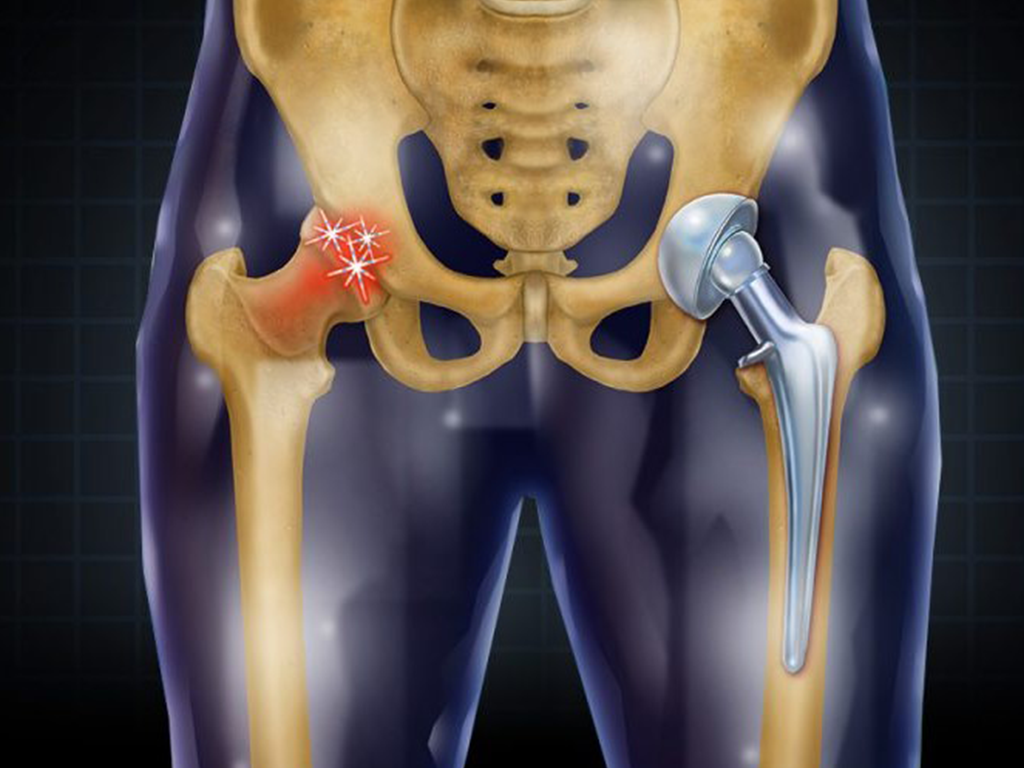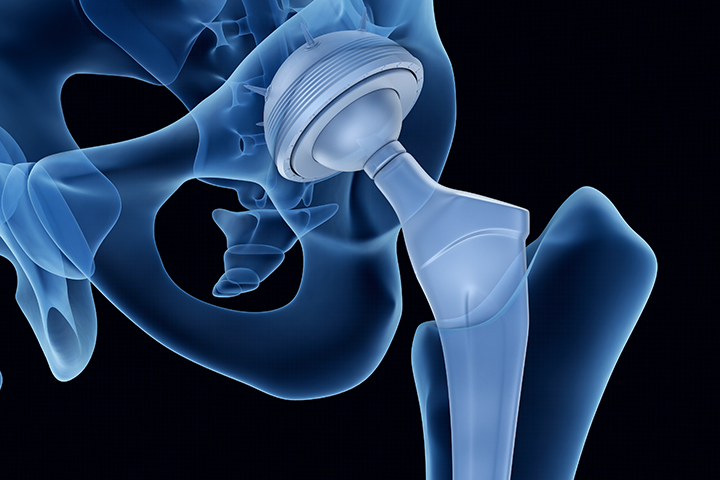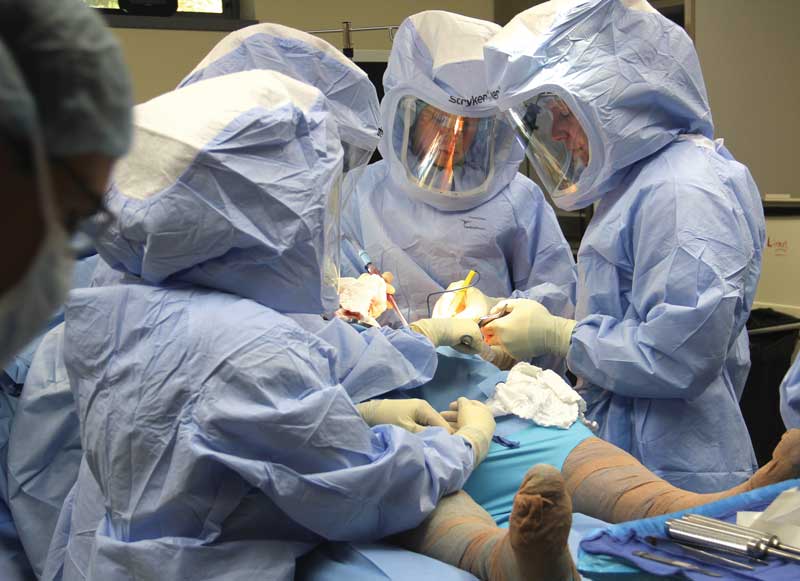Summery: Hip Replacement Surgery Demystified
Hip pain, whether caused by arthritis, injury, or other conditions, can significantly impact daily life and mobility. For many individuals, hip replacement surgery becomes a transformative solution to regain function and alleviate pain. In this comprehensive guide, we will demystify hip replacement surgery, exploring the diagnostic process, the surgical procedure, recovery, and what patients can expect on their journey toward improved hip health. We can discuss more about “Hip Replacement Surgery Demystified” in this article.

- Summery: Hip Replacement Surgery Demystified
- **1. Introduction to Hip Replacement Surgery
- **2. When is Hip Replacement Surgery Considered?
- **3. Diagnostic Process
- **4. Types of Hip Replacement Surgery
- **5. The Surgical Procedure
- **6. Postoperative Care and Recovery
- **7. Benefits of Hip Replacement Surgery
- **8. Potential Risks and Complications
- **9. Who is an Ideal Candidate for Hip Replacement Surgery?
- **10. Dr. Gautam Gupta’s Expertise in Hip Replacement Surgery
- **11. Conclusion
- Best Hip Replacement Surgery In Kolkata.
**1. Introduction to Hip Replacement Surgery
Hip replacement surgery, also known as hip arthroplasty, is a surgical procedure designed to replace a damaged or diseased hip joint with an artificial implant. The primary goal is to relieve pain, improve hip function, and enhance overall quality of life.

**2. When is Hip Replacement Surgery Considered?
Hip replacement surgery is generally considered for individuals experiencing:
- Osteoarthritis: A degenerative joint condition characterized by the breakdown of cartilage in the hip joint, leading to pain and stiffness.
- Rheumatoid Arthritis: An autoimmune disease causing inflammation in the hip joint, resulting in pain, swelling, and deformity.
- Hip Fractures: Severe fractures or injuries to the hip joint that may not heal adequately with conservative treatments.
- Other Hip Conditions: Certain hip conditions, such as avascular necrosis, where the blood supply to the hip bone is compromised, may also warrant hip replacement. We can see more about “Hip Replacement Surgery Demystified” in this article.
Read More:
**3. Diagnostic Process
Physical Examination:
The journey to hip replacement surgery typically begins with a thorough physical examination. The orthopedic surgeon assesses the range of motion, strength, and stability of the affected hip.
Imaging Tests:
Diagnostic imaging, including X-rays and sometimes magnetic resonance imaging (MRI), helps visualize the extent of damage to the hip joint. These images aid in the precise diagnosis and planning of the surgical procedure.
Discussion of Symptoms:
Patients play a crucial role in the diagnostic process by providing detailed information about their symptoms, such as the nature of pain, its intensity, and how it affects daily activities. We can find more about “Hip Replacement Surgery Demystified” in this article.

**4. Types of Hip Replacement Surgery
Similar to knee replacement, hip replacement surgery comes in different forms to address various patient needs:
- Total Hip Replacement (THR): This involves replacing both the ball and socket of the hip joint with artificial components.
- Partial Hip Replacement (Hemiarthroplasty): In cases where only the ball of the hip joint is damaged, a partial hip replacement may be recommended.
- Hip Resurfacing: This involves capping the hip joint’s ball with a metal prosthesis, preserving more of the patient’s natural bone.
**5. The Surgical Procedure
Preoperative Preparation:
Before the surgery, patients undergo a thorough preoperative assessment, and in some cases, they may need to discontinue certain medications or adjust their diet.
Anesthesia:
Hip replacement surgery can be performed under general anesthesia, spinal anesthesia, or a combination of both. The choice depends on the patient’s health and the surgeon’s preferences. We can discover more about “Hip Replacement Surgery Demystified” in this article.
Incision:
The surgeon makes an incision to access the hip joint. Modern techniques often involve minimally invasive approaches, resulting in smaller incisions and potentially faster recovery.
Bone Preparation:
The damaged or diseased parts of the hip joint, including the ball and socket, are removed. The remaining bone is then prepared to accommodate the artificial hip components.
Implant Placement:
Artificial components, typically made of metal, plastic, or ceramic, are securely attached to the prepared bone surfaces. These components mimic the function of the natural hip joint.
Closure:
Once the implants are in place, the incision is closed, and the patient is moved to a recovery area.

**6. Postoperative Care and Recovery
Hospital Stay:
Most patients stay in the hospital for a few days following hip replacement surgery. During this time, pain is managed, and physical therapy is initiated to aid in mobility.
Physical Therapy:
Rehabilitation is a critical aspect of hip replacement recovery. Physical therapists work with patients to improve strength, flexibility, and overall hip function.
Home Recovery:
Upon discharge, patients receive detailed instructions for at-home care. This includes exercises, medication management, and guidelines for activities of daily living.
Follow-Up Appointments:
Regular follow-up appointments with the orthopedic surgeon are scheduled to monitor progress, address any concerns, and adjust the rehabilitation plan as needed.

**7. Benefits of Hip Replacement Surgery
- Pain Relief: Hip replacement surgery is renowned for providing significant pain relief, allowing individuals to regain their mobility without discomfort.
- Improved Mobility: Many patients experience a substantial improvement in hip joint function, leading to enhanced mobility and the ability to engage in daily activities.
- Enhanced Quality of Life: With reduced pain and improved function, individuals often report a better overall quality of life following hip replacement.
- Durability: Modern hip implants are designed for durability, offering long-lasting relief for years to come. We can see and discuss more about “Hip Replacement Surgery Demystified” in this article.
**8. Potential Risks and Complications
While hip replacement surgery is generally safe, there are potential risks and complications, including:
- Infection: Despite stringent precautions, infections can occur postoperatively.
- Blood Clots: There is a risk of blood clot formation, especially in the legs.
- Implant Issues: Rarely, issues such as wear, dislocation, or implant failure may arise.
- Nerve or Blood Vessel Damage: During surgery, there is a minimal risk of damaging nearby nerves or blood vessels.
**9. Who is an Ideal Candidate for Hip Replacement Surgery?
Ideal candidates for hip replacement surgery are those who:
- Experience Persistent Hip Pain: Pain that persists despite conservative treatments like medications and physical therapy.
- Face Limitations in Daily Activities: Difficulty performing routine activities like walking, climbing stairs, or getting up from a seated position.
- Find No Improvement with Other Treatments: Lack of improvement with alternative treatments for an extended period.

**10. Dr. Gautam Gupta’s Expertise in Hip Replacement Surgery
Dr. Gautam Gupta, a distinguished orthopedic surgeon, specializes in hip replacement surgery. With years of experience and a commitment to patient-centric care, Dr. Gupta is known for his expertise in providing comprehensive hip health solutions.
**11. Conclusion
Hip replacement surgery is a transformative solution for individuals suffering from debilitating hip conditions. Understanding the diagnostic process, the surgical procedure, and the recovery journey is essential for those considering or undergoing this life-changing surgery. Consulting with a skilled orthopedic surgeon like Dr. Gautam Gupta ensures personalized care and guidance throughout the entire process.

In conclusion, hip replacement surgery offers a path to reduced pain, improved mobility, and an enhanced quality of life. Dr. Gautam Gupta’s dedication to excellence in orthopedic care positions him as a trusted partner for individuals embarking on the journey to regain control over their hip health.
Best Hip Replacement Surgery In Kolkata.
Dr. Gautam Gupta: Redefining Orthopedic Care
Experience a new standard of orthopedic excellence with Dr. Gautam Gupta. With a decade of specialized expertise, Dr. Gupta is a trusted name in knee and hip replacements, ligament injuries, and sports trauma. His commitment to advanced techniques and personalized care ensures a transformative orthopedic journey.
Bone Doctor Gautam Powered By Argusdna
Dr. Gautam Gupta[M.S. (ORTHO)]
Fellowship Shoulder & Knee Surgery (Germany & Netherland) Ex-Assistant Professor (W.B.M.E.S)
Sports Injury Consultant (Indian Football Association, W.B., Chapt) Reg. No. 63422 (WBMC),
Phone No. : +91 62917 71106
Email Id : contact@bonedoctorgautam.com
Bone And Joint Clinic – Best Joint Replacement Clinic | Best Orthopedic Clinic in Kolkata
:591, Tagore Park Rd, Tagore Park, Kasba, Kolkata, West Bengal 700039
Link:https://g.page/r/CbQzKPsoxiZVEBM/
Dr Gautam Gupta – Best Knee Replacement Surgeon | Best Hip Replacement Surgeon | Best Sports Injury Surgeon in Kolkata: 591 Laskar Hat Road Near Tagore Park Auto Stand, Kolkata, West Bengal 700039






